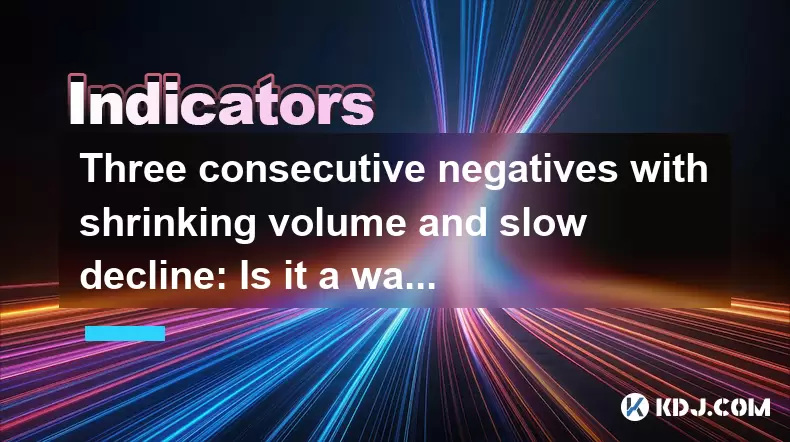-
 Bitcoin
Bitcoin $119600
0.45% -
 Ethereum
Ethereum $4671
8.16% -
 XRP
XRP $3.250
2.78% -
 Tether USDt
Tether USDt $0.9999
0.01% -
 BNB
BNB $838.0
3.17% -
 Solana
Solana $198.5
12.77% -
 USDC
USDC $0.9997
-0.01% -
 Dogecoin
Dogecoin $0.2396
6.18% -
 TRON
TRON $0.3547
2.21% -
 Cardano
Cardano $0.8583
9.20% -
 Chainlink
Chainlink $24.42
13.29% -
 Hyperliquid
Hyperliquid $44.08
1.42% -
 Stellar
Stellar $0.4492
2.37% -
 Sui
Sui $3.915
6.09% -
 Bitcoin Cash
Bitcoin Cash $612.9
3.02% -
 Hedera
Hedera $0.2627
5.34% -
 Ethena USDe
Ethena USDe $1.000
-0.03% -
 Avalanche
Avalanche $24.94
7.83% -
 Litecoin
Litecoin $132.6
10.48% -
 Toncoin
Toncoin $3.439
1.39% -
 UNUS SED LEO
UNUS SED LEO $9.212
2.34% -
 Shiba Inu
Shiba Inu $0.00001371
4.89% -
 Uniswap
Uniswap $11.54
1.13% -
 Polkadot
Polkadot $4.211
7.67% -
 Dai
Dai $0.9998
-0.03% -
 Cronos
Cronos $0.1649
-1.62% -
 Ethena
Ethena $0.7975
-1.46% -
 Pepe
Pepe $0.00001235
9.15% -
 Bitget Token
Bitget Token $4.445
0.46% -
 Aave
Aave $323.7
8.18%
Three consecutive negatives with shrinking volume and slow decline: Is it a wash or a real decline?
Three consecutive negative price movements with shrinking volume and a slow decline in crypto trading could signal either a wash or a real decline, requiring careful analysis.
Jun 09, 2025 at 01:14 am

In the world of cryptocurrency trading, understanding the nuances of price movements and volume changes is crucial for making informed decisions. One scenario that traders often encounter is a sequence of three consecutive negative price movements, accompanied by shrinking volume and a slow decline. This situation raises an important question: Is it a wash or a real decline? To answer this, we need to delve deeper into the technical aspects of these patterns and explore what they might signify.
Understanding Consecutive Negatives
When a cryptocurrency experiences three consecutive negative price movements, it means that the price has declined over three successive periods. This pattern is often viewed with concern because it suggests a sustained downward trend. However, the context in which these declines occur is crucial. The presence of shrinking volume during these declines adds another layer of complexity to the analysis.
The Role of Volume in Price Movements
Volume is a critical indicator in technical analysis because it provides insights into the strength of a price move. When volume is high during a price decline, it typically indicates strong selling pressure and a higher likelihood of a sustained downtrend. Conversely, when volume decreases during a series of price declines, it suggests that the selling pressure might be waning. This scenario can sometimes signal a potential reversal or a period of consolidation rather than a continuation of the downtrend.
Analyzing Slow Decline
A slow decline in price, coupled with shrinking volume, often indicates that the market is losing momentum. This can be a sign that the sellers are running out of steam, and the price might be approaching a bottom. However, it's important to differentiate between a slow decline that is part of a larger bearish trend and one that might be a precursor to a reversal. To do this, traders need to look at other technical indicators and broader market conditions.
Is It a Wash?
A wash in trading terms refers to a situation where the price movement is not indicative of a significant change in market sentiment or trend. In the context of three consecutive negatives with shrinking volume and a slow decline, a wash might occur if the price eventually rebounds to its previous levels without much ado. This scenario is more likely if the declines are part of a larger consolidation phase rather than a true bearish trend. Traders often look for signs of support levels being tested and holding firm, which can indicate a wash rather than a real decline.
Is It a Real Decline?
On the other hand, if the slow decline with shrinking volume is part of a broader bearish trend, it might signal a real decline. A real decline would be characterized by subsequent price movements that continue to trend downwards, possibly with increasing volume as more sellers enter the market. In this case, the initial three consecutive negatives are just the beginning of a more significant downturn. Traders need to be vigilant and look for confirmation from other indicators such as moving averages, RSI, and MACD to ascertain whether the decline is indeed real.
Technical Indicators to Watch
To determine whether the pattern of three consecutive negatives with shrinking volume and a slow decline is a wash or a real decline, traders should pay attention to several key technical indicators:
- Moving Averages: A crossover of short-term moving averages below longer-term ones can confirm a bearish trend. Conversely, if the price remains above key moving averages, it might suggest a wash.
- Relative Strength Index (RSI): An RSI that moves into oversold territory (<30) and then rebounds can indicate a potential reversal, suggesting a wash. If the RSI continues to decline, it might signal a real decline.
- Moving Average Convergence Divergence (MACD): A bearish crossover of the MACD line below the signal line can confirm a real decline. If the MACD line stays above the signal line or shows signs of a bullish crossover, it might suggest a wash.
Case Studies and Real-World Examples
To illustrate these concepts, let's consider a few hypothetical examples from the cryptocurrency market:
- Example 1: Bitcoin experiences three consecutive negative days with shrinking volume and a slow decline. The price tests a strong support level at $30,000 and rebounds, eventually returning to its previous levels. In this case, the pattern was likely a wash.
- Example 2: Ethereum shows three consecutive negative days with shrinking volume and a slow decline. However, the price breaks through a key support level at $2,000 and continues to decline, with volume picking up. This scenario suggests a real decline.
Trading Strategies Based on the Pattern
Traders can use the pattern of three consecutive negatives with shrinking volume and a slow decline to inform their trading strategies:
- For a Potential Wash: If the pattern suggests a wash, traders might look to enter long positions once the price shows signs of reversal. They should set stop-loss orders below recent lows to protect against the possibility of a false reversal.
- For a Real Decline: If the pattern suggests a real decline, traders might consider short positions or exiting long positions. They should use technical indicators to confirm the bearish trend and set stop-loss orders above recent highs to manage risk.
Monitoring and Adjusting Positions
Regardless of whether the pattern is a wash or a real decline, it's essential for traders to continuously monitor their positions and adjust them based on new information. Market conditions can change rapidly, and what appears to be a wash might turn into a real decline, and vice versa. Traders should use a combination of technical analysis, market news, and sentiment analysis to make informed decisions.
Frequently Asked Questions
Q1: How can I differentiate between a wash and a real decline using other technical indicators?
To differentiate between a wash and a real decline, you can use several technical indicators:
- Moving Averages: Look for crossovers. A bearish crossover (short-term moving average crossing below a long-term moving average) can confirm a real decline, while staying above key moving averages might suggest a wash.
- RSI: An RSI moving into oversold territory and then rebounding can indicate a wash. A continued decline in RSI might suggest a real decline.
- MACD: A bearish crossover of the MACD line below the signal line can confirm a real decline. A bullish crossover or staying above the signal line might suggest a wash.
Q2: What are some common mistakes traders make when analyzing three consecutive negatives with shrinking volume and slow decline?
Common mistakes include:
- Ignoring Broader Market Context: Focusing solely on the pattern without considering broader market trends and sentiment.
- Overlooking Volume Confirmation: Not waiting for volume to confirm the price movement, which can lead to misinterpretation of the pattern.
- Failing to Use Stop-Loss Orders: Not setting stop-loss orders to manage risk, which can result in significant losses if the pattern turns out to be a real decline.
Q3: Can fundamental analysis help in determining whether the pattern is a wash or a real decline?
Yes, fundamental analysis can provide additional context. Factors such as regulatory news, technological developments, and macroeconomic trends can influence cryptocurrency prices. If fundamental analysis suggests strong underlying value, the pattern might be more likely to be a wash. Conversely, negative fundamental developments could indicate a real decline.
Q4: How can I use the pattern of three consecutive negatives with shrinking volume and slow decline in my long-term investment strategy?
For long-term investors, the pattern can serve as a signal to reassess their positions. If the pattern suggests a wash, it might be an opportunity to buy more at a lower price. If it indicates a real decline, investors might consider reducing their exposure or waiting for a confirmed reversal before adding to their positions. Long-term investors should combine this pattern analysis with fundamental analysis to make informed decisions.
Disclaimer:info@kdj.com
The information provided is not trading advice. kdj.com does not assume any responsibility for any investments made based on the information provided in this article. Cryptocurrencies are highly volatile and it is highly recommended that you invest with caution after thorough research!
If you believe that the content used on this website infringes your copyright, please contact us immediately (info@kdj.com) and we will delete it promptly.
- Meme Coins: Chasing the 2025 Surge – Which Will Moonshot?
- 2025-08-13 10:25:23
- Bitcoin's Wild Ride: Rally, Pullback, and What's Next
- 2025-08-13 10:25:23
- Bitcoin, Bitmax, and Institutional Demand: A New Era of Crypto Investment
- 2025-08-13 10:45:12
- Solana, ROAM, and Airdrops: What's the Buzz in 2025?
- 2025-08-13 11:35:13
- Riding the Crypto Wave: NFTs, DeFi, and the Market's $4.2T High
- 2025-08-13 11:35:13
- Cold Wallet: Cashback, Crypto, and Cutting Gas Fees Like a Boss
- 2025-08-13 11:45:17
Related knowledge

What does it mean when the +DI and -DI cross frequently in the DMI indicator but the ADX is flattening?
Aug 11,2025 at 03:15am
Understanding the DMI Indicator ComponentsThe Directional Movement Index (DMI) is a technical analysis tool composed of three lines: the +DI (Positive...

What does the sudden appearance of a "dark cloud cover" candlestick pattern during an uptrend indicate?
Aug 13,2025 at 11:35am
Understanding the 'Dark Cloud Cover' Candlestick PatternThe dark cloud cover is a bearish reversal pattern in technical analysis that typically appear...

What does it mean when the moving average, MACD, and RSI all send buy signals simultaneously?
Aug 11,2025 at 01:42pm
Understanding the Convergence of Technical IndicatorsWhen the moving average, MACD, and RSI all generate buy signals at the same time, traders interpr...

What does it mean when both the KDJ indicator and the RSI show overbought signals simultaneously?
Aug 13,2025 at 11:35am
Understanding the KDJ Indicator in Cryptocurrency TradingThe KDJ indicator is a momentum oscillator derived from the Stochastic Oscillator, widely use...

What does it mean when the price is trading above the SAR indicator but the red dots are densely packed?
Aug 09,2025 at 11:49pm
Understanding the SAR Indicator and Its Visual SignalsThe SAR (Parabolic Stop and Reverse) indicator is a technical analysis tool used primarily to de...

What does it mean when the candlestick chart forms a "Morning Star" but trading volume is sluggish?
Aug 12,2025 at 06:28pm
Understanding the Morning Star Candlestick PatternThe Morning Star is a three-candle bullish reversal pattern commonly observed in cryptocurrency pric...

What does it mean when the +DI and -DI cross frequently in the DMI indicator but the ADX is flattening?
Aug 11,2025 at 03:15am
Understanding the DMI Indicator ComponentsThe Directional Movement Index (DMI) is a technical analysis tool composed of three lines: the +DI (Positive...

What does the sudden appearance of a "dark cloud cover" candlestick pattern during an uptrend indicate?
Aug 13,2025 at 11:35am
Understanding the 'Dark Cloud Cover' Candlestick PatternThe dark cloud cover is a bearish reversal pattern in technical analysis that typically appear...

What does it mean when the moving average, MACD, and RSI all send buy signals simultaneously?
Aug 11,2025 at 01:42pm
Understanding the Convergence of Technical IndicatorsWhen the moving average, MACD, and RSI all generate buy signals at the same time, traders interpr...

What does it mean when both the KDJ indicator and the RSI show overbought signals simultaneously?
Aug 13,2025 at 11:35am
Understanding the KDJ Indicator in Cryptocurrency TradingThe KDJ indicator is a momentum oscillator derived from the Stochastic Oscillator, widely use...

What does it mean when the price is trading above the SAR indicator but the red dots are densely packed?
Aug 09,2025 at 11:49pm
Understanding the SAR Indicator and Its Visual SignalsThe SAR (Parabolic Stop and Reverse) indicator is a technical analysis tool used primarily to de...

What does it mean when the candlestick chart forms a "Morning Star" but trading volume is sluggish?
Aug 12,2025 at 06:28pm
Understanding the Morning Star Candlestick PatternThe Morning Star is a three-candle bullish reversal pattern commonly observed in cryptocurrency pric...
See all articles

























































































